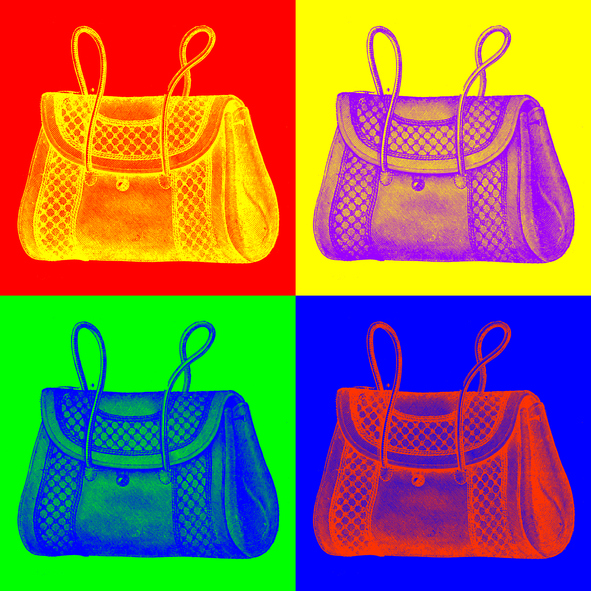
When it comes to luxury items, there has been a historic stigma of pre-ownership. Although cultural attitudes change over time, it’s safe to say that most everyone can at least understand that people generally prefer new products over hand-me-downs and refurbished models. There’s something magical about peeling a plastic protector away from a new phone screen, or the smell of a brand-new car. And they’re not even especially luxurious items!
However, it’s precisely because cultural attitudes change over time that we’re covering this topic. Readers from past articles know that Millennials and Gen Z are exerting pressure on retailers to assume more corporate social responsibility, particularly when it comes to diversity and sustainable practices. Additionally, vintage, coveted items like the newly rediscovered must-haves from seasons past like vintage Christian Dior saddle bags can often be found only in resale markets like Far Fetch, Net-A-Porter, and The RealReal.
As a result of millennial desires to be more eco-friendly, the access to rare items the secondary market provides, and rapidly reversing cultural attitude towards both ostentatious displays of excess and the stigma of pre-ownership, the luxury resale market is growing healthily and is projected to reach USD $47.13 billion by 2025. Luxury brands are going to need to embrace this trend in order to attract this new breed of conscientious customer and, ultimately, remain at the forefront of fashion as these couture fashion houses have always been.
Leadership
As is true in most business, the brands that take charge of how a new or expanding market develops will be the ones to reap the most rewards, so adopting a leadership position is a must. Of course, the marketplace will develop in accordance with consumer preferences as it always does, so agility and flexibility are both critically important as well. Nevertheless, brands—luxury or otherwise—that engage with their customers and proactively develop their sector virtually always have better brand recognition, loyalty, and ultimately better bottom lines.
In the luxury resale space, thought leadership is demonstrated primarily through brand buy-in. That is to say, luxury brands that embrace rather than scorn the resale market perform better in it. This is neither surprising nor revelatory, but for luxury brands looking to expand, it’s important to get over the stigma and actually take the sector seriously. According to the retail experts at McKinsey & Company, this is not only because luxury resale participants find added value in brand buy-in but also because it attracts customers who may only be interested in purchasing new goods if there’s a vibrant resale market/channel for them to access once the item is no longer fashionable (making resale buy-in especially important for luxury fashion such as handbags and watches).
Technology
In addition to embracing the resale market, brands and retailers should focus on providing a seamless digital service, with all the conveniences and luxuries in-person shopping can provide as well. Consumers of all stripes are tech savvy these days, and online luxury sales are poised to grow to $77 billion USD by 2025 according to research by Luxe Digital. Any luxury brand in either the resale or new markets and looking to attract new customers should be investing heavily in their technology to bring the real-world experience to life in a digital environment.
Of course, technology investments can be sizeable and take time to come online, which means it’s important to make sure that you understand your target market, the services they want and how to conveniently deliver them, and which applications will best fulfil your needs. For example, tools such as Salesfloor can be used for clienteling and events, which can be especially valuable to luxury brands looking to attract new customers, as well as connecting customers to their favorite associates for the exceptional personalized and guided experiences luxury customers are accustomed to.
Luxury Technology: Blockchain & NFTs
Non-Fungible Tokens (NFTs), blockchain, and augmented reality are the newest unexplored territory that pioneering fashion brands are exploring. Among them are Gucci and Nike-- two pioneering brands that are diving head first into the Metaverse and changing the way we view gaming and virtual social spaces.
While Distributed Ledgers and Non-Fungible Tokens (NFTs) aren’t luxury technologies, they’re powerful and slowly disrupting every sector they’re implemented in, including luxury resale. In order to understand why, it’s important to know how the basics. Blockchains, aka Distributed Ledgers, are in essence, exactly what they sound like; each “block” represents a record of some kind, along with an encrypted link to the block before it, creating a chain.
For cryptocurrencies, each block/record is a transaction, though it’s important to note that this is not the only record type available. Furthermore, blockchains are also known as Distributed Ledgers because everyone involved has a persistently updating ledger. This makes it virtually impossible to insert a fraudulent record or otherwise tamper with a blockchain, as any record that disagrees with the network is instantly detectable.
Therein lies the power of blockchain (and why tech bros are so into it, even if they’re a little excitable); instead of just recording transactions, you can also record health records, transportation records, etc. As a result, supply chain managers can follow inventory from manufacturer to outlet, and potentially beyond. A luxury brand using a properly configured blockchain can in theory follow an item all the way through the purchase and repurchase cycle to verify the authenticity of resold items.

NFTs, on the other hand, are digital tokens that confer ownership of original pieces of digital art. There’s a lot of controversy surrounding them, and the specific technology isn’t relevant in this case. The point is they are also an excellent candidate for confirming the authenticity and ownership of luxury products in the resale market. By combining them with supply management blockchains and accepting cryptocurrencies, luxury retailers can create a powerful attractor for early adopters and tech-oriented clients.
The Takeaway
When it comes to capitalizing on the growing opportunities the luxury resale market offers, brands should act boldly, but carefully. Taking a leadership position within the market generally attracts significantly more clients with little damage to brand name, meaning the gains in customers, loyalty, and brand perception far outweigh the costs. By carefully curating the right combination of applications and new technologies, luxury brands can expand their influence, attract clients, and better position themselves for future changes in their sector.
Interested in keeping au courant with luxury fashion and tech trends? Subscribe to The Influencer and have insights and industry reports delivered directly to your inbox.




